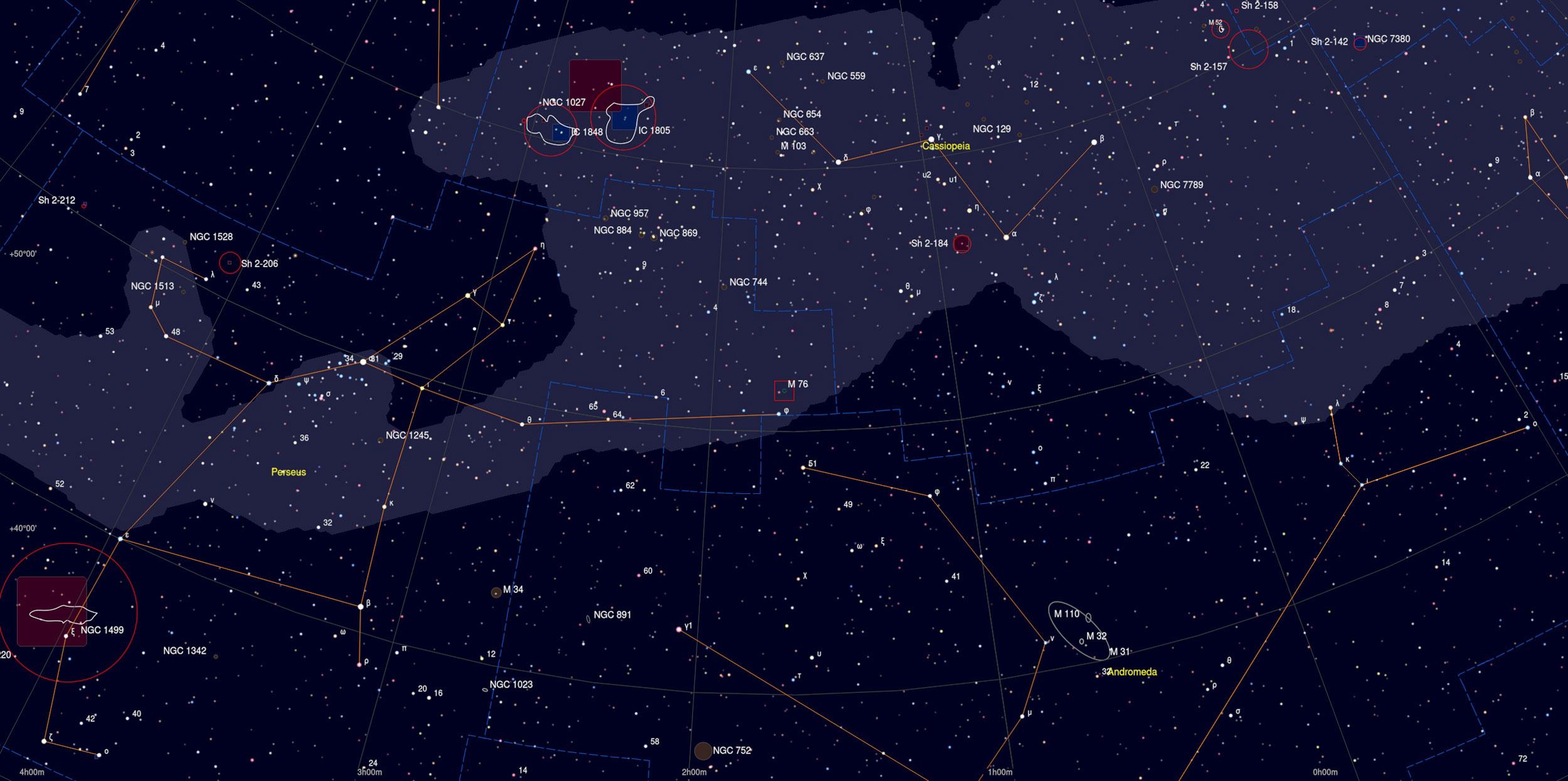Little Dumbbell Nebula (M76) in Perseus
The planetary Nebula Messier 76 (M76, NGC 650/651) is one of the faintest Messier Objects, and one of only four planetary nebulae in Messier’s catalog, situated in the Eastern part of constellation Perseus.
The appearance of M76 resembles to some degree that of the Dumbbell Nebula M27. Most probably, the main body (the bar, or cork) is a bright and slightly elliptical ring we see edge-on, from only a few degrees off its equatorial plane. This ring seems to expand at about 42 km/sec. Along the axis perpendicular to this plane, the gas expands significantly more rapidly to form the lower surface brightness “wings” of the butterfly.
This image is a combination of a long exposed narrowband image (Halpha 5nm/OIII 3nm) of the planetary nebula with a short exposure RGB image of the star field. North is at 3 o’clock.
[description from seds.org]
Details
